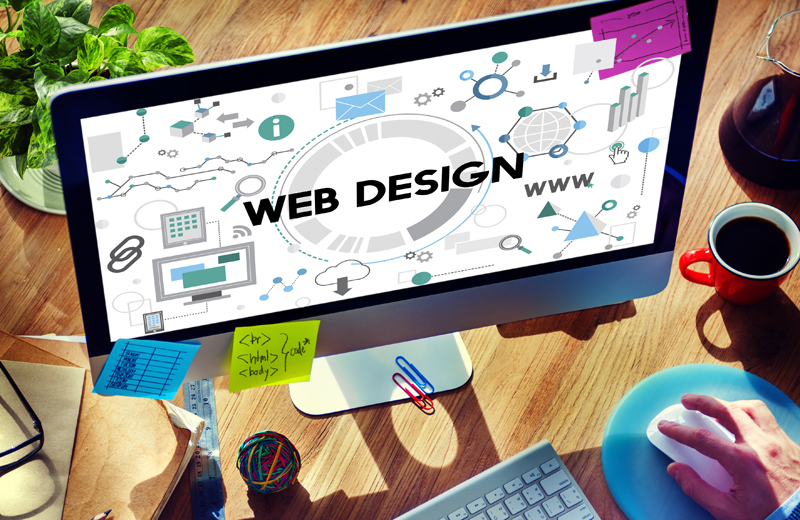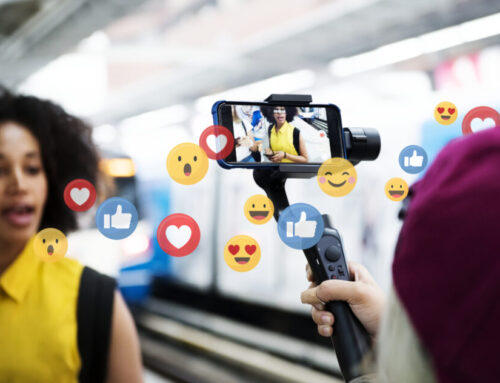Have you ever gone to a business website with the intention of finding more information or even immediately making a purchase but been put off because the website looked like it was frozen in the past? If a website looks tired, out of date and second rate, why would customers think your products and services are any better? For most businesses today, their website is their calling card. If your website design and development has not kept up with the times, your customers are going to draw conclusions. Customers form an opinion about a website in 0.05 seconds!
The landscape of web design is continually evolving, driven by technological advancements, changing user behaviors and emerging aesthetic preferences. For small businesses, staying updated with the latest website design trends is crucial to remain competitive and engaging. As we move into the second half of 2024, several key trends are shaping the future of web design. You certainly don’t need to implement all of them and you shouldn’t. But you and your web experts should be aware of current web design trends and choose directions that work well for your business and immediately show users you are on top of it.
Here’s a look at website design trends for the second half of 2024 and how small businesses can leverage them to enhance their online presence.
1. Emphasis on Performance and Speed
With the increasing emphasis on user experience, website performance and speed are couldn’t be more important. Slow-loading web pages can have a devastating impact on your user engagement and conversion rates. Your users just aren’t going to wait. 47% of them will leave if it takes more than two seconds for your website to load.
In 2024, businesses are paying close attention to optimization techniques such as image compression, lazy loading and efficient coding practices. Tools like Google’s Core Web Vitals are becoming standard benchmarks for assessing website performance. Small businesses should regularly audit their websites for speed and make necessary adjustments to ensure fast loading times.
2. AI and Machine Learning Integration
Ok, this is one of the website design trends that shouldn’t surprise anybody. As with a lot of marketing areas, artificial intelligence (AI) and machine learning (ML) are revolutionizing web design by enabling more personalized and interactive user experiences. Chatbots, AI-driven recommendations, and dynamic content that adapts to user behavior are becoming mainstream.
Small businesses can use to provide real-time customer support, analyze user data for insights and offer personalized content that enhances user engagement and satisfaction. Integrating AI tools doesn’t have to be complex; many platforms offer plug-and-play solutions that are accessible even to those with limited technical expertise. Or for a more strategic, professional approach, you can hire a professional to analyze your website and implement AI chatbots where they will be of the most use.
3. Minimalist and Clean Design
In web design these days, less can be more. Minimalism continues to be a dominant trend, with a focus on clean, uncluttered layouts that enhance readability and user experience. This design philosophy emphasizes simplicity, with ample white space, limited color palettes and straightforward typography.
For small businesses, a minimalist design can convey professionalism and clarity, making it easier for visitors to navigate the site and find information. The key is to balance simplicity with functionality, ensuring that all necessary elements are still easily accessible. The idea is to make it easier for your audience, not to just present a design direction.
4. Dark Mode and High Contrast Themes
Dark mode has surged in popularity in website design trends, offering a sleek and modern aesthetic that also reduces eye strain for users. High contrast themes, which combine dark backgrounds with bright, bold text and elements, are also gaining traction. These themes not only enhance visual appeal but can also improve readability and accessibility. Small businesses should consider offering dark mode options on their websites, allowing users to switch between light and dark themes based on their preferences. This can also be helpful for website accessibility.
5. Advanced Animation and Micro-Interactions
Animations and micro-interactions add interactivity that motivates engagement to websites. These catch attention, keep attention and give users a positive experience. They can range from subtle hover effects and button animations to more complex scrolling animations and interactive elements.
When done correctly, animations can guide users, highlight important information and enhance the overall user experience. But there’s a fine line to walk. You don’t want to detract you’re your products, detract from performance or overwhelm users. For small businesses, incorporating thoughtful micro-interactions can make a website feel more dynamic and engaging. So, don’t overdo it, but adding these sparingly can really help to update your website.
6. Voice User Interface (VUI)
No doubt about it, voice is here to stay. Use of voice search is growing. 125.2 million people used voice search in 2023, up from 123.5 million just the year before. More than half of adults worldwide use voice search daily.
As voice search continues to grow in popularity, incorporating voice user interface (VUI) into web design is becoming increasingly important to growing your traffic, enhancing compatibility and giving you a competitive advantage. VUI allows users to interact with a website using voice commands, offering a hands-free and convenient experience. To stay competitive, you will want to incorporate natural language processing and structure your content so voice search can easily understand it.
7. Mobile-First Design
Mobile-first is one of the most important off the website design trends. With the majority of web traffic now coming from mobile devices, you need to be thinking about how your website appears on mobile devices before other types of screens. It’s a no-brainer that websites today must be optimized for smaller screens and touch navigation.
Responsive design techniques enable websites to adapt seamlessly to various screen sizes and orientations. There is no excuse for your website not to be user-friendly and visually appealing on all devices.
8. Inclusive and Disability Accessible Design
Inclusivity and accessibility are non-negotiable aspects of web design today. To ignore website accessibility is to risk substantial fines. Ensuring that websites are accessible to all users, including those with disabilities, is not only a legal requirement in many regions but also a best practice for reaching a broader audience.
There are many ways to refresh your website for accessibility. Alternative text for images, keyboard navigability for those who can’t use a mouse, and adherence to Web Content Accessibility Guidelines (WCAG) are just a start.
9. Sustainable and Eco-Friendly Design
Sustainability is a growing concern among people worldwide, and web design is not exempt from this trend. Sustainable web design focuses on reducing the environmental impact of websites through efficient coding, reduced energy consumption and the use of green hosting providers.
Small businesses can contribute to sustainability by optimizing their websites for lower energy usage and choosing hosting services that use renewable energy sources. This not only helps the environment but can also resonate with eco-conscious consumers.
10. Immersive and Augmented Reality (AR) Experiences
Augmented Reality (AR) is transforming how users interact with websites, offering immersive experiences that blend digital and physical worlds. AR can be used for virtual try-ons, interactive product demos, and enhanced storytelling. Want to see what that contemporary sofa will look like in your living room? Use AR to see it before you buy.
AR may seem like it’s too complex to some small businesses. But there are many AR platforms and tools available that make it accessible for small businesses. Incorporating AR can create memorable experiences that engage users and go a long way to differentiate your brand from competitors.
Want Help with Updating Your Website and Website Design Trends?
It’s critical today that you keep your website up-to-date. Once a user has a bad experience on a website, 88% of them will never return. There are a lot of possibilities available now in the second half of 2024 that will carry your website branding through next year. It’s hard to stay up-to-date on the latest design trends when you are running a business. And it can be even harder to create a professional looking site without help.
To schedule a free consultation with an INLocal Marketing Expert to discuss current website design trends and updating your website, contact us through the INLocal Marketing website or call us at (646)440-1426.






